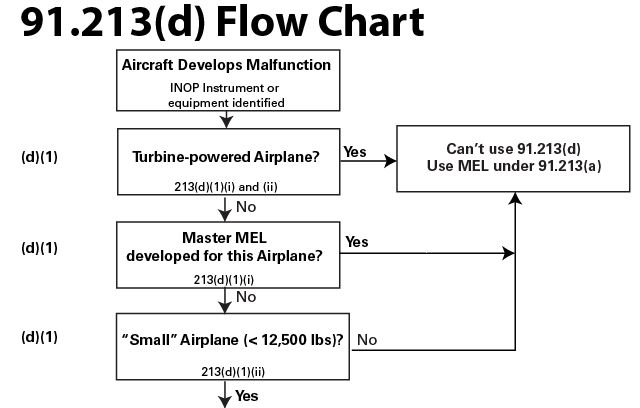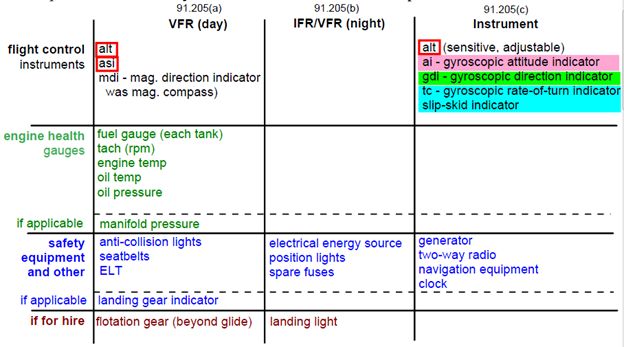blakeyoung
Filing Flight Plan
I am a student pilot studying for my practical. No matter how many times I try to read about this I seem to find myself confused. However, I think I may finally understand, and I just want to make sure.
Let's say I am preflighting my Cessna 162 Skycatcher and I notice that a particular piece of equipment is non-functional. The question is, can I safely operate the aircraft given this malfunction? First, I consult 14 CFR 91.213(d) and note that if my aircraft is a non-turbine-powered airplane (which it is), that I can skip the entire MEL business altogether. So first I check to see if it is on the required day-time VFR equipment list. It is not. Then I look in the POH under the equipment list to see if there is an "R" next to the piece of equipment indicating "Required." It is not. I check the ADs and review 14 CFR 91.205 and 207. Again I find no mention of this particular piece of equipment. I also determine, to the best of my ability, that this would not pose a significant hazard. Great. So I stick an INOPERATIVE placard next to the piece of equipment and go on my merry way, and I'll have someone fix it when I choose to get around to it.
Am I correct so far?
Alternatively, I could request an MEL from the local FSDO. I would check to see if the equipment is listed. If not, I cannot fly. If so, I can fly in accordance with what is directed in the MEL.
Does a 162 even have an MEL? I am also confused about how a Letter of Authorization and procedures document plays in this.
Let's say I am preflighting my Cessna 162 Skycatcher and I notice that a particular piece of equipment is non-functional. The question is, can I safely operate the aircraft given this malfunction? First, I consult 14 CFR 91.213(d) and note that if my aircraft is a non-turbine-powered airplane (which it is), that I can skip the entire MEL business altogether. So first I check to see if it is on the required day-time VFR equipment list. It is not. Then I look in the POH under the equipment list to see if there is an "R" next to the piece of equipment indicating "Required." It is not. I check the ADs and review 14 CFR 91.205 and 207. Again I find no mention of this particular piece of equipment. I also determine, to the best of my ability, that this would not pose a significant hazard. Great. So I stick an INOPERATIVE placard next to the piece of equipment and go on my merry way, and I'll have someone fix it when I choose to get around to it.
Am I correct so far?
Alternatively, I could request an MEL from the local FSDO. I would check to see if the equipment is listed. If not, I cannot fly. If so, I can fly in accordance with what is directed in the MEL.
Does a 162 even have an MEL? I am also confused about how a Letter of Authorization and procedures document plays in this.


